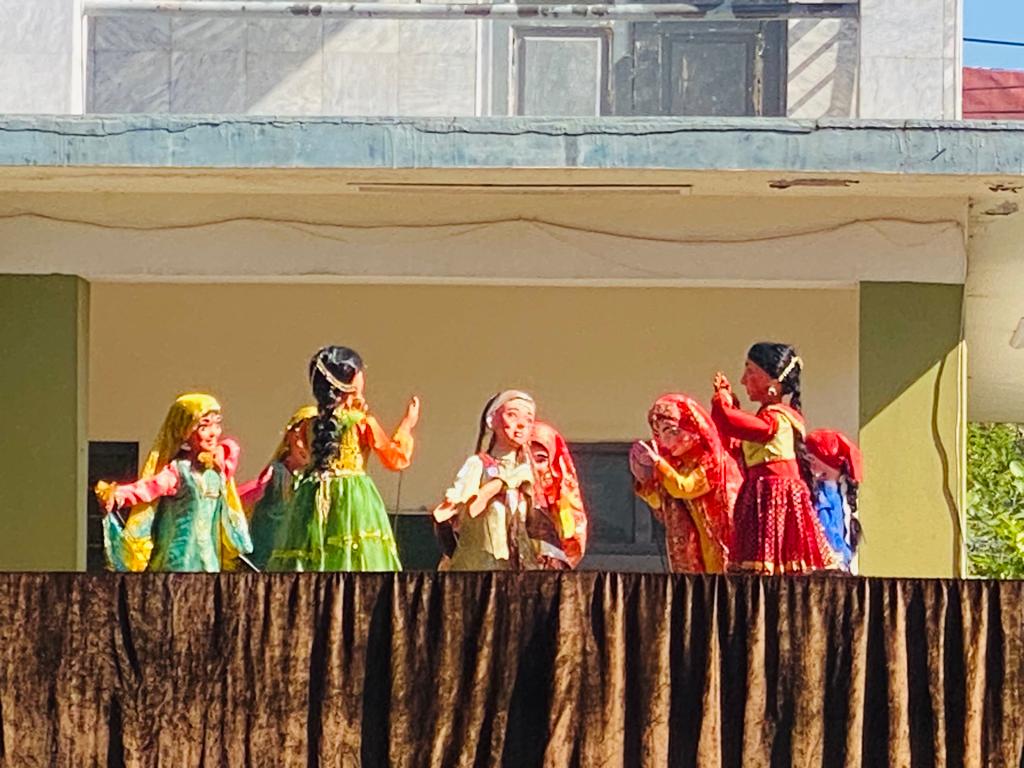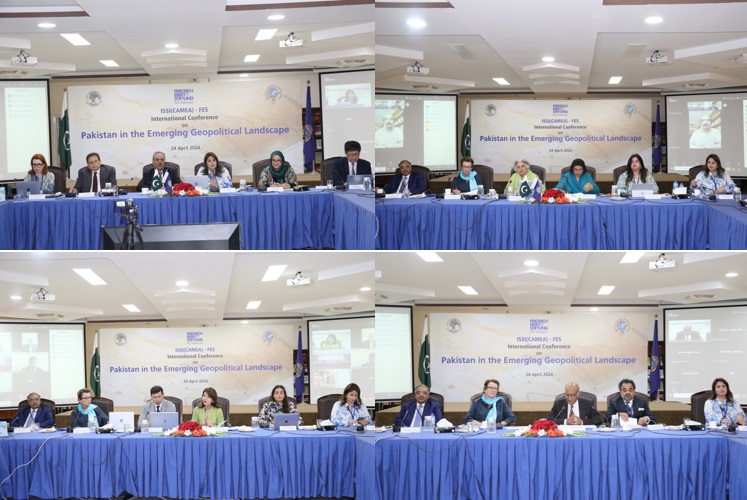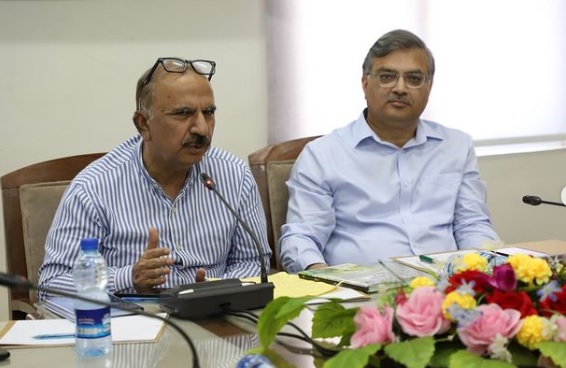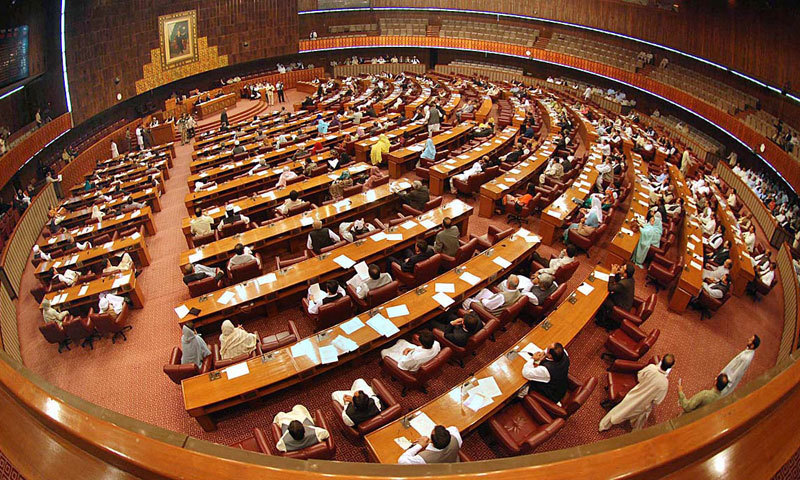Ali Jabir Malik
ISLAMABAD, Jun 02 (APP): Climate change is driving an increase in snakebites and envenomation deaths in Pakistan, India, Nepal, Sri Lanka and beyond – and the community-driven solutions are leading the fightback.
In Punjabi, they call avoiding a snakebite “kakh lagna”, denoting a narrow escape. A 39-year-old journalist and farmer, Chaudhry Waqar Anwar said that he narrowly escaped snake bites thrice in the fields around Gujranwala, in Pakistan’s province of Punjab.
Anwar recounted how snakes often hide under ready-to-harvest crops. Recently, one had its sights on his feet as he worked in a paddy field, but he killed it with a farming implement before it could bite him.
A growing crisis of snakebites has much of the subcontinent in its grip, cutting across borders and threatening thousands of lives. Recently, two South Asian journalists Ali Jabir Malik from Pakistan and Diwash Gahatraj explored the link between climate change and the growing incidents of snakebites as part of a cross-border reporting workshop organised by the US-based East-West Center.
The duo’s joint research and interaction with the affected communities revealed a notable increase in snakebite cases in the region, with links to climate change-induced extreme heat and floods.
On a tour of his lush farmland, Anwar explained to the two environmental journalists that his village once had acres of dunes, but the locals had converted that area to arable land. While this led to bigger harvests, it also forced many snakes out of their usual habitats, increasing fatal snakebite encounters.
Anwar said the area around Gujranwala is home to diverse species of venomous and non-venomous snakes. The venomous snakes include king cobras and cobras, Russell’s vipers, saw-scaled vipers and the common krait.
That’s a stroke of luck that Rajesh Manjhi did not share. The 35-year-old daily-wage labourer succumbed to snakebite in 2022 while sleeping at home in the town of Muzaffarpur, in the Indian state of Bihar, leaving his family in poverty.
“A snake must have slithered in during the night as we lacked electricity in our house, and bit my husband while he was asleep,” Kiran Devi, Manjhi’s 25-year-old widow, recounted. She is now struggling to make ends meet and raise her children without her husband.
In 2017, the World Health Organisation (WHO) declared snakebite envenoming a neglected tropical disease, with 70 per cent of all snakebite deaths reported in Southasia. And the burden of this disease, like so many others, falls most heavily on the poorest. Snakebites are more likely to kill people in impoverished communities because antivenom is often inaccessible to them.
The WHO estimates that approximately five million snakebites occur annually worldwide, leading to around 2.7 million envenomations. A 2020 study that pieced together 19 years of snakebite data found that, on average, over one million snakebites occur each year in India alone. And, frequently, snakebites kill. The study reported an average of 58,000 snakebite deaths per year across the country.
Hafiz Saboor Ul Hassan, who works at the serology laboratory of the National Institute of Health in Islamabad, said that Pakistan has no official data available for snakebite cases because there is no central reporting system. But various scientific and health institutes, including global agencies like the WHO, UNICEF and the UN Office for the Coordination of Humanitarian Affairs, have calculated estimates of around 30,000 to 50,000 per year, with some 15,000 to 20,000 severe envenomation cases.
The authors of a 2019 medical paper titled “The timing is right to end snakebite deaths in South Asia” note that many snakebite cases go unreported because victims lack access to healthcare facilities or resort to non-medical treatments. Often this means going to faith healers for traditional remedies such as incantations and herbal concoctions, or applying tourniquets or incisions, increasing the likelihood of fatalities or serious injuries.
Much of South Asia has only patchy data on the prevalence of snakebites. A 2021–22 national survey from the Centre for Disease Control and Prevention in Bangladesh reported that over 400,000 people in the country were bitten by snakes in a year, with 7511 deaths recorded during the same period. But Mohammad Robed Amin, the director of the Department of Non-communicable Disease Control at the office of Bangladesh’s Director General of Health Services, noted that previous studies were incomplete, conducted only in villages and leaving out urban areas.
In Sri Lanka, the health ministry reported 34,239 snakebite cases in state hospitals in 2019 – but a representative of the Sri Lanka Medical Association said the true incidence was as high as 61,000 in a year. While the health ministry reported 50 fatalities in 2019, the Sri Lanka Medical Association reported 200, saying that the difference was due to the health ministry not capturing data of those going to private healthcare institutions.
Nepal’s Ministry of Health reported 1037 cases of poisonous snakebite and nine fatalities in 2023, but experts noted that the real figures are probably much higher. One study published in 2023 recorded 20,000 to 37,661 snakebite cases and between 1000 to 3225 deaths a year in Nepal, according to the Ministry of Health and the WHO, based on hospital data between 2010 and 2022.
CHANGES IN TEMPERATURE and flooding have resulted in habitat loss for snakes, which are increasingly moving out from their natural environments into alien and hostile ecosystems closer to human settlements. This is leading to a higher incidence of snakebites.
India and Pakistan have suffered extreme heat and floods in the past few years, and studies from Emory University in the United States and the Journal of Family Medicine and Primary Care suggest that these have triggered a surge in snakebite cases. A 2018 study from the University of Kelaniya in Sri Lanka also came to similar conclusions, estimating that the country’s annual snakebite burden could increase by roughly 30 per cent in the next 25 to 50 years based on climate-change projections.
The South Asian region is heating up everywhere. In April 2024, a heatwave hit east and south peninsular India, areas which usually are not impacted by high temperatures. The same month, Bangladesh was forced to close primary schools as temperatures soared to 42 degrees Celsius, and more than 1473 people died in neighbouring Myanmar from heat-related causes. Nepal recorded its second hottest year on record in 2023, and has already seen high temperatures early in 2024.
Floods have also been on the rise across the Subcontinent. At least 135 people were killed and huge tracts of land were damaged after heavy rain in Afghanistan and Pakistan this April. The rains came after a winter that was drier than usual, resulting in drier soil that exacerbated the impacts of the flooding. Pakistan also suffered unprecedented flooding in 2022, which claimed at least 1739 lives. In the aftermath, affected communities faced many knock-on dangers – including water-borne diseases and snake bites.
Aftab Alam Khan, a senior climatologist and the CEO of Resilient Future International said climate change triggers ecological shifts that particularly affect the habitats of various insects and reptiles, including snakes. Heatwaves, floods, droughts, forest fires and extreme cold all contribute to the migration of snakes and disrupt their hibernation patterns, resulting in increased human-snake encounters and snakebites. Khan pointed out that the situation is similar in both Pakistan and India because of their shared geographical terrain, vegetation and climate conditions.
Muhammad Rais, a senior herpetologist and an assistant professor at the Arid Agriculture University in Rawalpindi, Pakistan, agreed that changes in snake behaviour spurred by climate change can put more of the reptiles in the path of humans. “Snakes are ectothermic. They become active at warmer temperatures,” he said. “Likewise, flooding increases the odds of destruction of the snake’s habitat that makes them venture out and come in direct contact with humans.”
A venomous Salazar’s Pit Viper in Bagdogra forest near Siliguri. Climate change triggers ecological shifts that affect the habitats of snakes, pushing them closer to human habitations and increasingly the chances of snakebites.
SNAKEBITES ARE OFTEN considered a “poor man’s disease” because they predominantly occur in fields, remote areas and underserved settlements. People living in inadequate housing are particularly vulnerable to snakebite-related fatalities and severe injuries.
In Pakistan, Muhammad Amin, a 24-year-old student from Tharparkar in Sindh Province, had stepped out of his house to collect firewood when a venomous snake bit his feet. Tharparkar, known for its sandy terrain, is home to various species of snakes. Amin’s village, like many in the region, grapples with poverty, limited access to clean drinking water and a lack of employment opportunities and education.
In many cases in India, Pakistan and across Southasia, people have succumbed to snake bites due to lack of antivenom even when they have been brought to hospitals or treatment centres quickly.
Hassan, from the National Institute of Health in Islamabad, said that hospitals in Pakistan buy anti-venom independently from the government or private sellers. The National Institute of Health is Pakistan’s only manufacturer of antivenom specific to local snake species. Different pharmaceutical companies also import antivenom from India, the world’s leading manufacturer and exporter of the drugs.
“Anti-venom is composed of antibodies that are specifically built against the venom of snakes,” Hassan said. “When these antibodies are injected in the body, they react with toxins of venom present in the body and neutralise them.” He said that each hospital has its own established protocol for snakebite treatment. In general, a blood-clot test is performed and at least three to four vials of antivenom are administered intravenously until symptoms of envenomation disappear.
But sometimes, victims cannot get to hospitals in time. In 2022, two brothers from near the town of Islamkot, in Sindh, were bitten. By the time they arrived at the nearest hospital, after over two hours on the road, it was too late, even though doctors had antivenom on hand. Administering antivenom within two hours of the snakebite could have saved the brothers’ lives, doctors said.
Surajit Giri, a doctor at Demow Model Hospital in Sivasagar district, in the Indian state of Assam, said the Indian government has made it mandatory to keep between 20 and 50 vials of antivenom at every community health centre in the country , each of which caters to between 80,000 and 120,000 people.
GIVEN THE THREAT, some individuals and communities are doing what they can themselves to reduce snakebites.
Surajit Giri, affectionately known as the “snake doctor,” is on a mission to ensure that no one dies of snakebites. As a government anesthesiologist in Assam, he has implemented a unique model since 2018 that has seen a 100 per cent success rate in the treatment of snakebites in Assam.
This model focuses on raising community awareness about snakes and snakebites and establishing communication channels to a Venom Response Team, which includes village heads and educated youth who promptly inform the nearest health centre for swift action.
The success of this model in the Sivasagar District of Assam is evident, with local communities embracing it and notable reductions in both snakebite morbidity and mortality rates.
“Snakes are losing their habitat due to changes in weather patterns,” Giri explained. “They are also losing their food sources due to infrastructural development and use of pesticides in the agricultural land, which is why they are entering human habitats.” Snakebites occur because humans are inadvertently coming between snakes and their prey, he added, adding that people need to be more cautious.
Similar community engagement efforts have made a difference in Margalla Hills National Park in Islamabad, the Pakistani capital, where human-wildlife conflicts occur because animals live close to human settlements.
The Islamabad Wildlife Management Board, the park’s custodian, has launched extensive community mobilisation and awareness campaigns. These include distributing educational materials, fostering close relationships with the 32 villages within the park and delivering special speeches during Friday sermons to promote wildlife protection and cohabitation with nature.
Community initiatives continue to provide hope to South Asians grappling with the long-neglected issue of snakebites. As rising temperatures and rising snakebite cases gain more public attention, the hope is for fewer snakebites and snakebites deaths across the region.
مضمون کا ماخذ : sorteios quina














